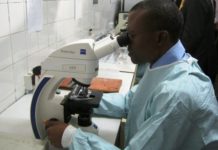
A new project that doles out funding on the basis of performance is seeing improvements in quality and delivery of health care across three states, experts said on Monday.
The $170.1 million Nigerian State of Health Investment Project, which started in 2013, runs across 1,470 health centres in Nasarawa, Adamawa and Ondo, and only releases funding on the basis of results.
“I think this is the future of health care delivery in Nigeria,” said Dr Faisal Shuaib, executive director of the National Primary Health Care Development Agency, at the project’s mid-term review in Abuja.
“We are beginning to see improvements in quality of health care delivery. Health facilities are renovated, stores have drugs. We are beginning to look at these results and, hoping from preliminary results, we will be advocating to governors and development partners to now focus on how we can motivate staff, decentralise and provide more autonomy to health facilities.”
The performance-based financing (PBF) model gives health facilities complete autonomy to hire and fire staff, decide how to spend their fund based on priorities—and must in turn show verifiable results periodically to continue receiving funding.
When mainstream, it would push out “frontloading”—the allocation of funds to health care in arbitrary figures instead of outcomes.
The World Bank, which funds the project, has disbursed some 85% of funds for it, and all three states involved in the project have established state primary health care development agencies, said Oluwole Oduntolu, senior health specialist at the World Bank and task team leader on the project.
“What is important is service getting to the people. It is not looking at the budget. That’s not the answer. The answer is how many people have benefited,” said Oduntolu.
Binta Ismail, national coordinator of NSHIP, said the project has also seen community ownership of the health facilities improve.
“The community voice has also been enhanced,” said Ismail. “Their satisfaction drives the project. If they are not satisfied, the facility cannot earn much. You are looking at both quantity and quality.”






















